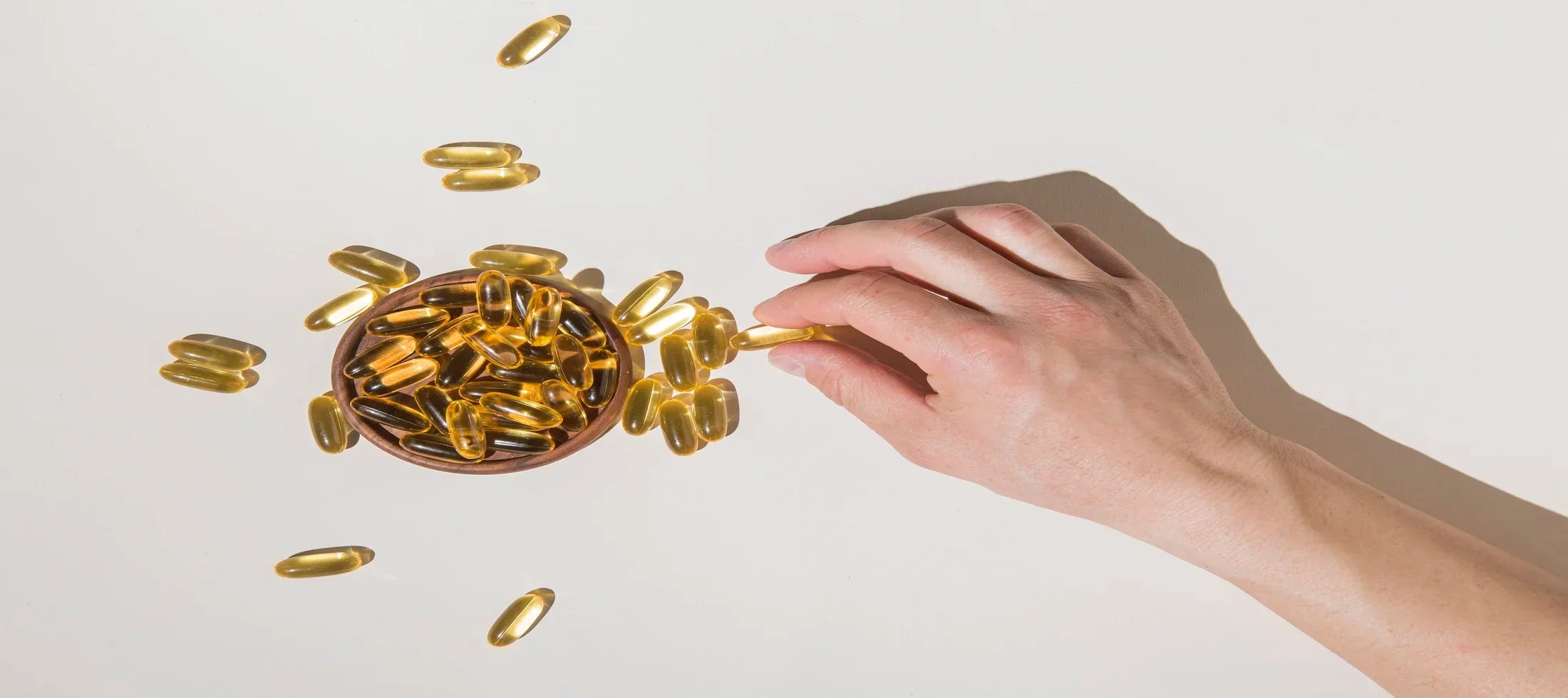In Pakistan, many people who train regularly in gyms, at home, or outdoors do not realize that a single nutritional gap could be holding them back. Despite consistent effort, recovery feels slower. Muscles stay sore longer than they should. Progress stalls, and strength does not improve the way it once did. These are not always signs of overtraining or aging. Often, they are symptoms of vitamin D deficiency.
What Vitamin D Does in the Body
Vitamin D is best known for supporting bone health, but it also plays a key role in muscle contraction, repair, and performance. It supports the immune system, helps regulate hormones, and affects mood and energy levels. For anyone who trains regularly, these are not minor factors. They are the foundation of consistent, sustainable progress.
Muscle cells have receptors for vitamin D. When these receptors are activated by healthy levels of the vitamin, the body becomes more efficient at repairing muscle tissue after workouts. This leads to better muscle recovery, less fatigue, and faster strength development over time.
Why Deficiency Is Common in Pakistan
Pakistan has sunlight throughout the year, yet deficiency rates remain high. This is because most people spend their days indoors, whether at work, university, or home. Covered clothing, air pollution, and poor timing of sun exposure further reduce the skin's ability to produce vitamin D.
Even those who train outdoors often do so early in the morning or late in the evening, when the body cannot convert sunlight into vitamin D effectively. Midday sun exposure is often avoided due to heat, but that is the window when vitamin D production is highest.
Diet also plays a role. The traditional Pakistani diet does not naturally include many foods rich in vitamin D. Items such as oily fish, egg yolks, and fortified milk are not part of most people’s everyday meals. Without conscious planning, most people do not get enough of this essential nutrient from food alone.
What the Research Says
A study published in Calcified Tissue International and Musculoskeletal Research in 2022 followed more than 3,200 people aged 50 and above. None of the participants had muscle weakness at the beginning. Over four years, the researchers measured their grip strength as a marker of overall muscular health.
The results were clear. People with vitamin D deficiency were 70 percent more likely to develop dynapenia, which is the medical term for age-related loss of muscle strength. This finding is not limited to older adults. The same biological process applies to younger people who train regularly. Without enough vitamin D, muscle performance declines quietly.
How to Tell If You Might Be Deficient
If you are training regularly but feel like your performance is slipping, your vitamin D level might be part of the reason. Signs include slower recovery, more frequent injuries, a drop in endurance, and a lack of strength progression. You may also notice fatigue that does not improve with rest, or low mood without a clear cause.
These symptoms can appear gradually. Many people blame their routine or schedule before considering that a nutritional deficiency might be the source.
Read more on What are the Symptoms of Low Vitamin D?
What You Can Do About It
The first step is to get tested. A simple blood test from any major lab in Pakistan can confirm your vitamin D level. Based on the result, a doctor may recommend a short course of supplements followed by a maintenance dose.
For those who prefer natural options, aim to get 15 to 20 minutes of direct sunlight on your arms or legs around midday, several times per week. Add foods like egg yolks, liver, and fortified dairy to your meals when possible. These changes support healthy levels over time, especially when combined with regular testing.
Why It Matters for Training
Correcting a deficiency will not make you stronger overnight, but over a few weeks, you may notice steady improvements. You will recover faster. Workouts will feel lighter. Strength and stamina will return. More importantly, your progress will reflect the effort you are putting in.
If you live in Pakistan, train indoors, and do not take vitamin D regularly, there is a strong chance your levels are low. Fixing that gap may be the most effective step you take toward better performance.
How to Test and Confirm a Deficiency
Vitamin D deficiency cannot be confirmed based on symptoms alone. The most reliable way to know your levels is with a 25-hydroxy vitamin D blood test, available at almost every diagnostic lab in Pakistan.
The test measures the amount of vitamin D circulating in your blood. Here is how levels are generally categorized:
-
Above 50 nmol/L is considered sufficient
-
Between 30 and 49 nmol/L is insufficient
-
Below 30 nmol/L is deficient
If your result falls into the insufficient or deficient range, you should consult a medical professional before beginning supplementation. This is important because vitamin D is fat-soluble and can accumulate in the body if taken in excess.
Correcting the Deficiency: A Step-By-Step Guide
Medical Supplementation
Doctors in Pakistan typically recommend vitamin D3 (cholecalciferol), either in capsule or ampoule form. A common approach includes taking a high dose once a week for six to eight weeks, followed by a maintenance dose.
You may be prescribed 50,000 IU weekly or 5,000 IU daily for a specific period, depending on the severity of your deficiency. After completing the course, retesting is often suggested to ensure your levels have stabilized.
Along with vitamin D supplementation, you can also add some Joint Support Supplements.
It is essential not to self-prescribe megadoses without testing, as too much vitamin D can lead to kidney stones, nausea, and calcium imbalances.
Sunlight as a Natural Source
In Pakistan, where the sun is available almost year-round, sunlight can be a safe and effective way to maintain healthy levels. However, timing and exposure matter. Aim for 10 to 20 minutes of sunlight exposure between 10:30 a.m. and 2:00 p.m., two to three times per week.
Skin should be uncovered on areas like the arms, face, or legs. Sitting near a window or in shaded areas does not help, as glass and fabric block the ultraviolet B rays required for vitamin D synthesis.
This method is most effective for maintaining healthy levels, but for people with confirmed deficiency, it is not enough on its own without initial supplementation.
Dietary Support
While food alone is rarely sufficient to correct a severe deficiency, certain items can support ongoing maintenance. In the Pakistani context, include the following options when possible:
-
Egg yolks, especially from free-range eggs
-
Fortified milk or yogurt, now available in brands like Nurpur or MilkPak
-
Beef liver, which is high in both vitamin D and iron
-
Sardines or mackerel, if accessible
-
Mushrooms, especially sun-dried varieties
Including these foods regularly is a useful long-term strategy, especially for athletes and gymgoers who train consistently and need nutritional stability.
How Long Until You Feel the Difference?
Most people begin to feel a change within three to four weeks of beginning treatment. For those who train, the improvements are often subtle at first. You may notice:
-
Less post-exercise soreness
-
Shorter recovery times
-
More stable energy throughout the day
-
Clearer focus during workouts
Over time, you may also see a return of strength, better endurance, and improved mood. These changes are cumulative. They do not arrive all at once but grow steadily as your system begins to recover.
It is important to understand that correcting a deficiency is not a short-term fix. It is a long-term correction that supports every aspect of physical health. For someone committed to regular training, this support is not optional; it is foundational.
Long-Term Benefits for Gymgoers and Athletes
For anyone who lifts, runs, cycles, or plays a sport, vitamin D helps protect progress. It reduces the risk of overuse injuries, improves neuromuscular coordination, and supports hormonal function. All of this contributes to performance that is more consistent, more resilient, and more sustainable.
Final Thoughts
Vitamin D deficiency in Pakistan is common even among healthy, active people. The climate provides sunlight, but lifestyle patterns reduce exposure. Diets are often unbalanced when it comes to nutrient diversity. Many people go years without realizing that their slow recovery or declining performance could be corrected with a single test and a few targeted steps.
If you train hard, care about progress, and want your results to match your effort, check your vitamin D status. For many, this is not a supplement. It is a solution. Addressing it now means fewer setbacks, better workouts, and a stronger body built on a stronger foundation.
FAQs
How does vitamin D affect workout performance?
Vitamin D supports muscle repair, energy regulation, and strength development. A deficiency can lead to slower recovery and reduced training results.
Can I get enough vitamin D from sunlight in Pakistan?
Yes, but only with proper exposure during midday hours. Covered skin and indoor lifestyles often prevent enough natural absorption.
What foods in a Pakistani diet help maintain vitamin D levels?
Egg yolks, fortified milk, beef liver, and oily fish are helpful sources. Regular intake supports long-term strength and recovery.
How long does it take to feel better after fixing a deficiency?
Most people notice improvements within three to four weeks. Recovery, mood, and energy usually improve steadily over time.



Share:
Foods to Avoid When Constipated
What to Eat and What Supplements to Take After a Workout